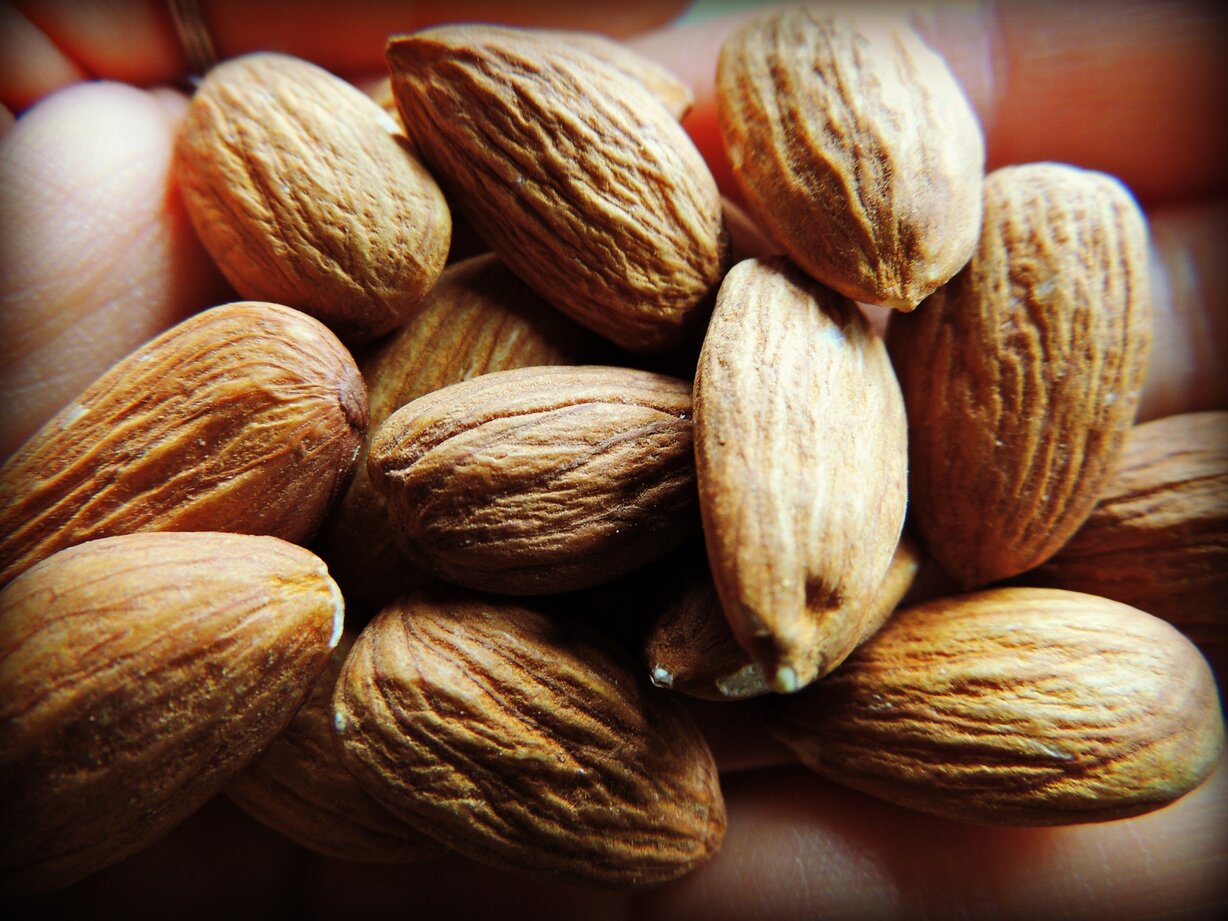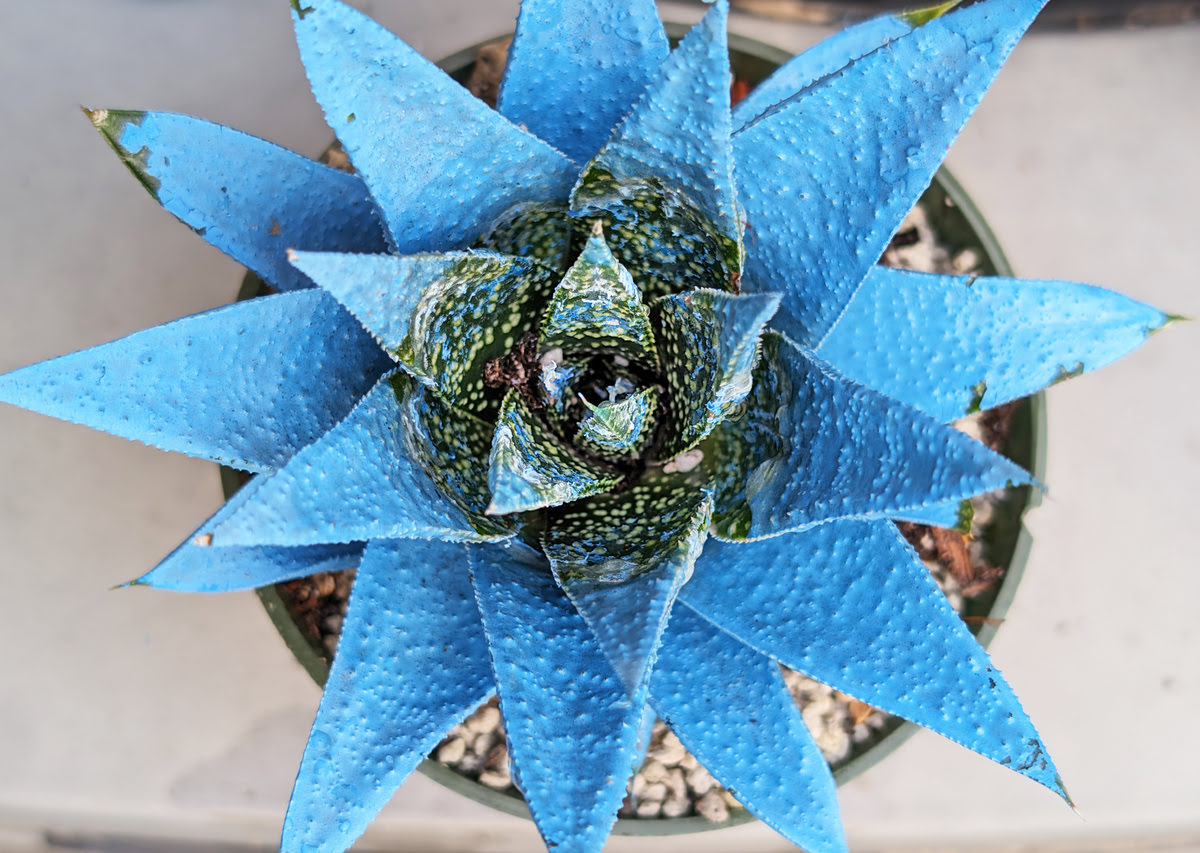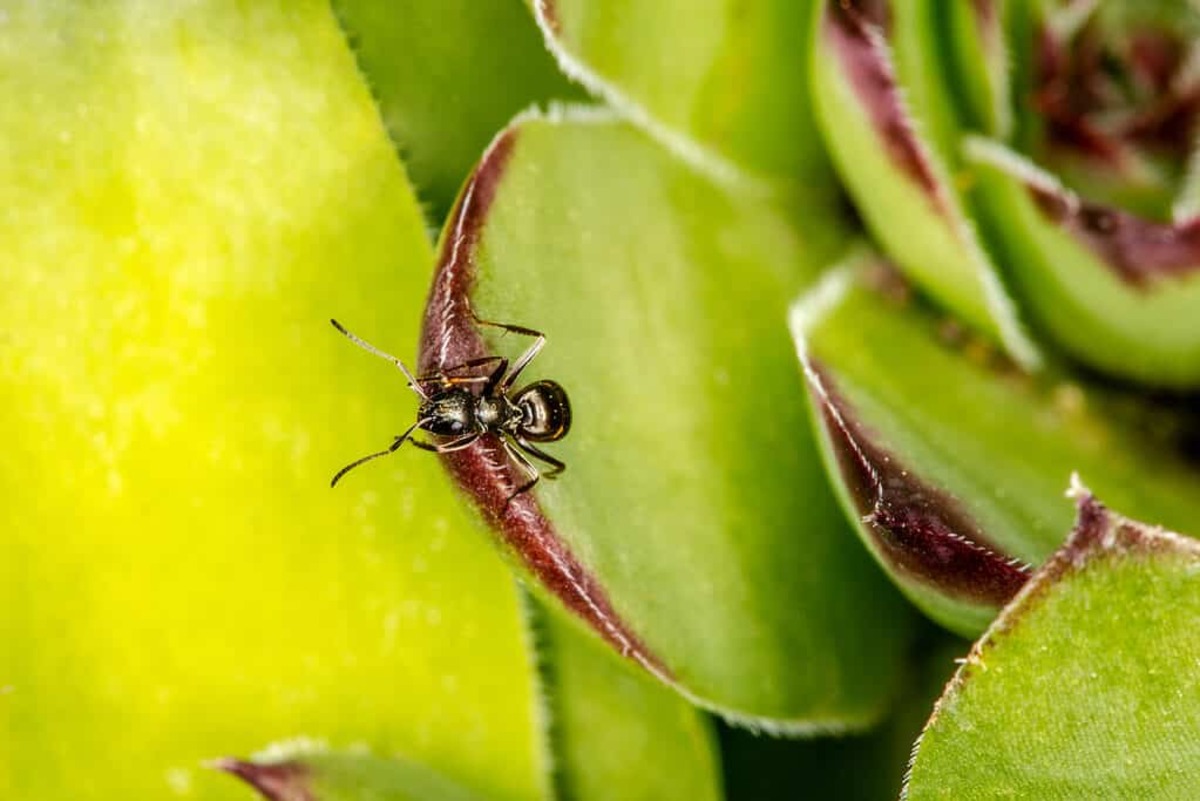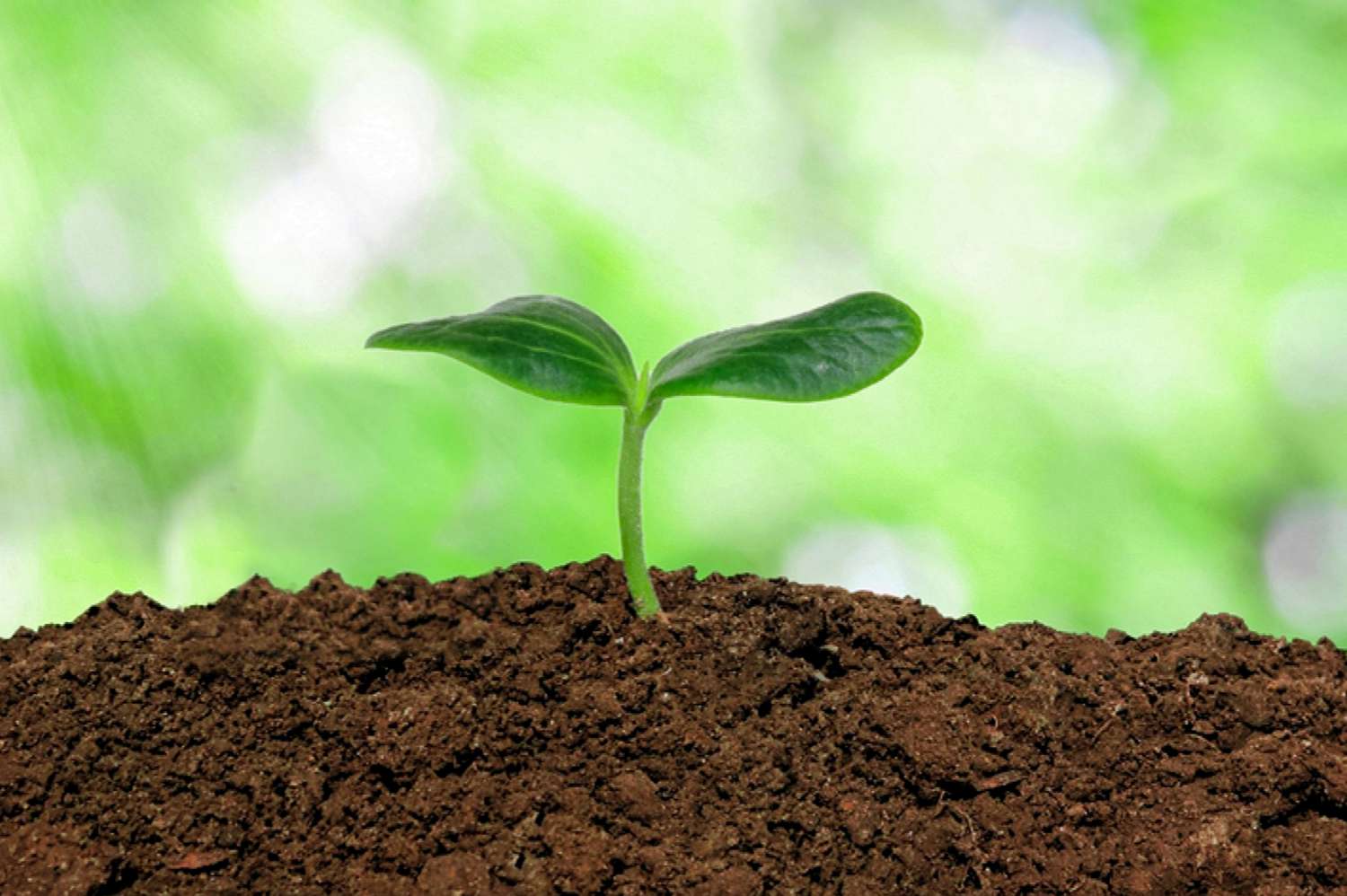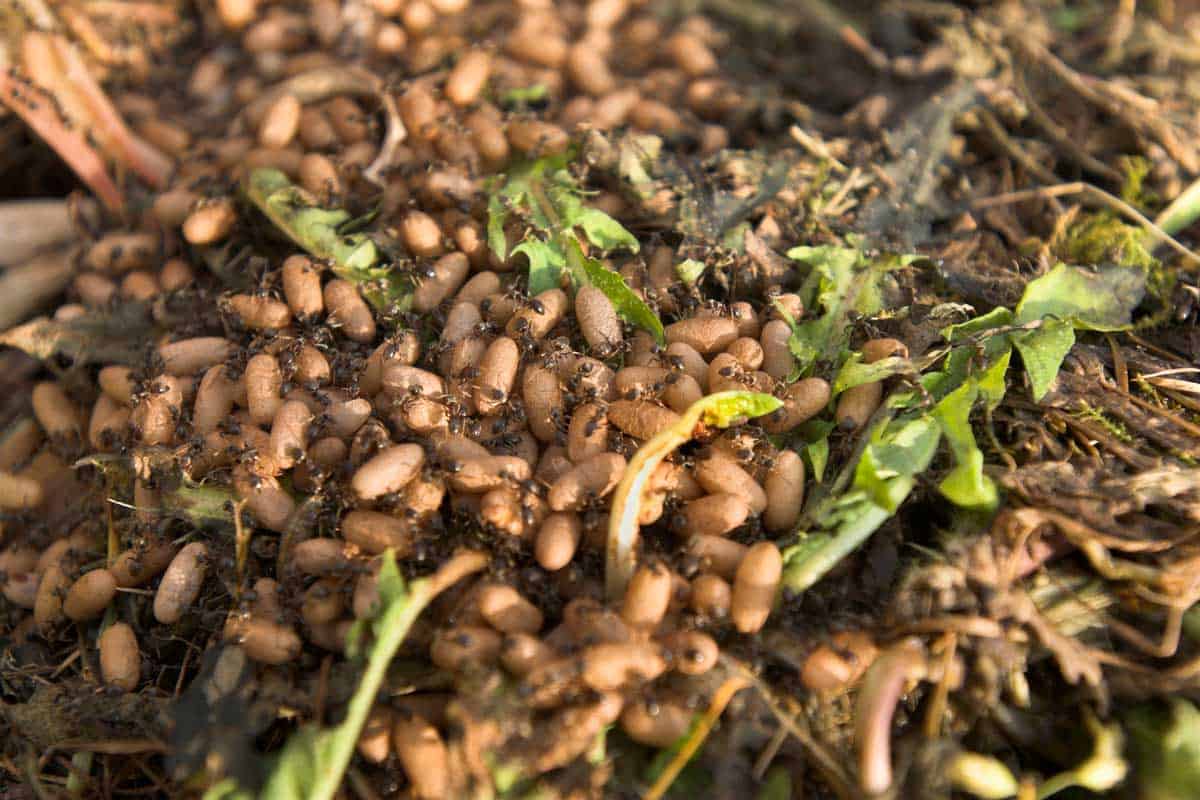Home>Gardening Tips and Tricks>Problem Solving>How To Remove Ants From Plant Soil


Problem Solving
How To Remove Ants From Plant Soil
Published: February 13, 2024
Learn effective methods for removing ants from plant soil and solving the problem once and for all.
(Many of the links in this article redirect to a specific reviewed product. Your purchase of these products through affiliate links helps to generate commission for Chicagolandgardening.com, at no extra cost. Learn more)
Table of Contents
- Introduction
- Understanding Ants in Plant Soil
- Signs of Ant Infestation
- Potential Problems Caused by Ants
- Natural Methods to Remove Ants from Plant Soil
- Removing Ant Trails
- Eliminating Food Sources
- Using Essential Oils
- Sprinkling Diatomaceous Earth
- Placing Cinnamon Sticks
- Chemical Methods to Remove Ants from Plant Soil
- Using Ant Baits
- Applying Insecticides
- Preventing Ant Infestations in Plant Soil
- Conclusion
Introduction
Having plants in our homes or gardens brings beauty, freshness, and a sense of tranquility. However, sometimes unwanted visitors like ants find their way into the plant soil, causing concern for plant health and aesthetics. Dealing with ants in plant soil can be frustrating, but it’s important to address the issue promptly to prevent further damage.
Ants are social insects known for their organized colonies and ability to work together effectively. While they play important roles in ecosystems by aerating soil and controlling other pests, having ants in plant soil can disrupt the balance and lead to plant damage. Ant infestations can cause problems such as damage to plant roots, nutrient depletion, reduced plant growth, and even the attraction of other pests like aphids.
Removing ants from plant soil requires a combination of natural and chemical methods, depending on the severity of the infestation and personal preferences. Natural methods focus on deterring and repelling ants using substances they dislike or disrupting their trails, while chemical methods involve the use of ant baits and insecticides.
This article will guide you through various techniques to effectively remove ants from plant soil. We will explore natural methods that are safe for both plants and the environment, as well as chemical methods to tackle more persistent ant infestations. Additionally, we will discuss preventive measures to avoid future ant problems in your plants.
By following the tips and techniques outlined in this article, you can ensure the well-being of your plants and create a pest-free environment. Let’s dive in and discover how to eliminate ants from your plant soil!
Understanding Ants in Plant Soil
Before we dive into methods of removing ants from plant soil, it’s essential to understand the behavior and characteristics of these tiny intruders. Ants are highly social insects that establish colonies consisting of different castes, including workers, soldiers, and a queen. They are attracted to plant soil for various reasons, including a source of food, moisture, or shelter.
Ants have a strong sense of smell and can quickly detect organic matter, such as decomposing plant materials or sugary substances like nectar or sap, which serve as their primary food source. Additionally, they are skilled at locating moist areas, making plant soil an attractive habitat.
One of the key reasons ants invade plant soil is to establish aphid farms. Aphids are small insects that feed on plant sap, producing a sweet, sticky substance known as honeydew. Ants feed on this honeydew and even protect aphids from predators. Therefore, if you notice ants crawling on your plants, it’s crucial to inspect for aphid infestations that might be attracting them.
Ants are also resourceful when it comes to building their nests. They can create tunnels, chambers, and even interconnected colonies that span vast areas. If the soil in your potted plants is loose, ants can easily dig tunnels and establish their nests, causing potential harm to the plant’s root system.
Understanding the behavior and motivations of ants in plant soil is the first step in effectively eliminating them. By targeting their preferences and disrupting their activities, we can successfully remove ants and ensure the health and vitality of our plants.
Signs of Ant Infestation
To effectively address an ant infestation in our plant soil, it’s important to be able to identify the signs of their presence. By recognizing these signs early on, we can take action and prevent any potential damage to our plants. Here are some common signs of ant infestation to look out for:
1. Ants crawling on plant foliage or soil: If you notice ants actively crawling on your plants or the surrounding soil, it’s a clear indication of an ant infestation.
2. Aphid presence: Ants are known to establish a symbiotic relationship with aphids. Check for the presence of small, soft-bodied insects on the leaves or stems of your plants, as this may attract ants.
3. Ant trails: Ants are organized creatures that travel along defined pathways. Look for visible trails of ants moving to and from the plant soil. These trails can be seen as a line of ants moving in a coordinated manner.
4. Mounded soil: Some ant species create mounds of loose soil in the vicinity of their nests. If you notice small mounds or disturbed soil near your plants, it could be a sign of an ant infestation.
5. Damaged plant roots: Ants can cause damage to the root system of plants, leading to stunted growth or wilting foliage. If your plants show signs of root damage or fail to thrive despite proper care, ants may be the culprit.
6. Visible ant nests: In outdoor gardens, certain ant species build visible nests in the soil. Look for small soil mounds or holes near your plants that could indicate the presence of an ant nest.
7. Increased pest activity: Ants are attracted to plants infested with other pests, such as aphids or scales. If you observe a sudden increase in pest activity on your plants, it may be a sign of an ant infestation.
Keep a keen eye on your plants and regularly inspect the soil and foliage to catch any signs of ant activity early on. The sooner you detect an infestation, the easier it will be to address and eliminate the problem.
Potential Problems Caused by Ants
While ants may seem harmless, their presence in plant soil can lead to a range of problems that can impact the health and well-being of your plants. Understanding these potential problems will highlight the importance of addressing ant infestations promptly. Let’s explore the potential issues caused by ants in plant soil:
1. Root Damage: Ants that tunnel through the soil can disrupt and damage the delicate root system of plants. This can impede the plant’s ability to absorb water and nutrients, leading to stunted growth, wilting, and even plant death.
2. Nutrient Depletion: Ants may bring in organic matter or feed on plant debris in the soil, which can deplete the available nutrients for the plants. This nutrient competition can impact the overall health and vigor of the plants.
3. Pest Attraction: Ants have a tendency to protect and even farm other plant pests, such as aphids. This symbiotic relationship between ants and pests can lead to an increase in pest populations, further damaging the plants.
4. Disturbed Soil Structure: Ant tunnels and nests can disrupt the natural soil structure, resulting in poor drainage and aeration. This can cause waterlogged soil, leading to root rot and other moisture-related issues for the plants.
5. Disrupted Plant Growth: Ants moving in the soil can cause disturbances and vibrations that can disrupt the normal growth and development of the plants. This can result in stunted growth, distorted foliage, and reduced flower or fruit production.
6. Spread of Diseases: Ants can unintentionally carry and spread plant diseases from one plant to another as they move through the soil. This can lead to the rapid spread of pathogens, compromising the health of multiple plants.
7. Aesthetic Issues: Having ants crawling on plants or visible ant trails in the soil can be unsightly and detract from the overall aesthetics of your indoor or outdoor garden.
It’s important to be proactive in addressing ant infestations to avoid these potential problems. By implementing effective removal methods and preventive measures, you can ensure the vitality and longevity of your plants, creating a healthy and thriving environment.
Natural Methods to Remove Ants from Plant Soil
When it comes to removing ants from plant soil, many people prefer to use natural methods that are safe for the environment, plants, and even humans. These natural techniques focus on deterring and repelling ants, as well as disrupting their trails. Let’s explore some effective natural methods to remove ants from plant soil:
1. Removing Ant Trails: Follow ant trails back to their entry point and block the entrance using caulk, petroleum jelly, or a natural barrier such as diatomaceous earth. This will disrupt their movement and prevent more ants from entering the soil.
2. Eliminating Food Sources: Ants are attracted to sugary substances, so promptly remove any fallen fruit, spilled nectar, or other food sources that may be attracting them. Keep your plant area clean and free of debris to minimize their attraction.
3. Using Essential Oils: Certain essential oils, such as peppermint, citronella, or tea tree oil, are known to repel ants. Dilute a few drops of your chosen essential oil with water and spray it around the affected area. Repeat this method regularly to keep ants away.
4. Sprinkling Diatomaceous Earth: Diatomaceous earth is a natural powder made from fossilized diatoms. Sprinkle a thin layer of diatomaceous earth around the base of affected plants. This abrasive substance cuts through the ants’ bodies and dehydrates them, effectively controlling their population.
5. Placing Cinnamon Sticks: Ants dislike the smell of cinnamon. Place cinnamon sticks around the plant containers or sprinkle ground cinnamon in the soil. The strong aroma will help deter ants from entering the soil.
For best results, combine these natural methods and use them consistently. Remember, natural methods may take some time to show significant results, especially for severe infestations. Patience and persistence are key when using the natural approach to remove ants from plant soil.
Removing Ant Trails
One effective natural method to remove ants from plant soil is by eliminating their trails. Ants communicate through chemical trails, which they use to navigate and guide other ants to food sources. By disrupting these trails, you can discourage ants from returning to the soil and prevent further infestations. Here’s how to remove ant trails:
1. Locate the Entry Point: Follow the ant trail to find the entry point where they are entering the soil. This is usually a small crack, crevice, or gap in the pot or container. Identifying the entry point will help you focus your efforts on blocking their access.
2. Clean the Entry Point: Thoroughly clean the entry point using a damp cloth or sponge. Remove any dirt, debris, or residue that may be attracting the ants. By eliminating any food or scent trails, you disrupt their communication and discourage their return.
3. Apply a Natural Barrier: Use natural substances like caulk, petroleum jelly, or even a mixture of water and dish soap to create a barrier at the entry point. Apply the chosen substance to seal off any cracks, gaps, or openings that ants may be using to enter the soil. This prevents ants from accessing the area and disrupts their trails.
4. Monitor and Repeat: Regularly monitor the area for any signs of new ant activity. If you notice ants attempting to find new entry points, promptly seal them to prevent further infestations. Repeat the process of cleaning and applying the natural barrier as necessary to maintain a pest-free environment.
By removing ant trails, you disrupt their communication and make it more difficult for ants to navigate and find their way back to the plant soil. This method is an essential step in effectively removing and preventing ant infestations. Remember to be thorough in your efforts and consistently monitor the area to ensure long-lasting results.
Eliminating Food Sources
Ants are attracted to a variety of food sources, including sugary substances, plant debris, and even fallen fruits. By eliminating these food sources, you can effectively discourage ants from entering and infesting your plant soil. Here are some ways to eliminate food sources for ants:
1. Clean Up Fallen Fruits and Spills: Regularly clean up fallen fruits, especially those that are ripe or overripe. Ants are attracted to the sweet aromas of these fruits. Additionally, clean up any spills of sugary substances or other food debris that may attract ants to the area.
2. Remove Dead Plant Materials: Clear away any dead leaves, stems, or flowers from the plant soil. These organic materials can provide food sources for ants and attract them to the area. Regularly prune and remove any dying or decaying plant parts to maintain a clean environment.
3. Avoid Overwatering: Excess moisture in the soil can attract not only ants but also other pests. Avoid overwatering your plants, as wet soil provides a suitable environment for ant infestations. Allow the soil to dry out between waterings to discourage ants and maintain a healthy balance.
4. Store Food Properly: If you have indoor plants, make sure to store any pet food, snacks, or other food items in well-sealed containers. Ants can be attracted to these food sources and find their way into the surrounding plant soil. Proper storage helps prevent ants from becoming a problem.
5. Maintain Cleanliness: Regularly clean the area around your plants, including nearby counters, shelves, and floors. Ants can be attracted to crumbs and other food particles, so keeping the area clean and free of sources will deter their presence.
By eliminating food sources, you create an environment that is less attractive to ants. This reduces the likelihood of infestations and helps to maintain the health and aesthetic appeal of your plants. Consistency is key, so make sure to incorporate these habits into your regular plant care routine.
Using Essential Oils
Essential oils are known for their potent fragrances and various properties, including their ability to repel ants. Using essential oils to deter ants from plant soil is a natural and effective method that is safe for both your plants and the environment. Here’s how you can use essential oils to keep ants at bay:
1. Choose the Right Essential Oils: Not all essential oils have the same effect on ants. Some of the most effective ones for repelling ants include peppermint, citronella, tea tree, lavender, and lemon. Select the essential oil or a combination of oils that you find most appealing or easily available.
2. Dilute the Essential Oil: Essential oils are highly concentrated, so it’s important to dilute them before use. Mix a few drops of the chosen essential oil with water in a spray bottle. The general ratio is around 10-20 drops of essential oil per cup of water, but you can adjust this based on your preference.
3. Thoroughly Spray the Affected Area: Spray the diluted essential oil solution directly onto the affected plant soil and surrounding areas. Pay attention to the entry points or trails where you have observed ant activity. The strong scent will deter ants from approaching the area and disrupt their presence.
4. Repeat Regularly: Essential oil solutions tend to evaporate over time, so it’s important to reapply them regularly. Repeat the spraying process every few days or as needed to maintain the effectiveness of the essential oil barrier.
5. Use Essential Oil-soaked Cotton Balls: Another way to use essential oils is by soaking cotton balls in the oil and placing them strategically around the plant containers. This helps disperse the scent of the essential oil and creates a natural barrier that ants dislike.
6. Consider Essential Oil Diffusers: If you have a larger indoor plant collection, using essential oil diffusers or humidifiers in the vicinity can help deter ants. The aroma released by these devices helps create an unfavorable environment for ants and discourages their presence.
Using essential oils is not only effective in repelling ants but also adds a pleasant fragrance to your plants and surroundings. Experiment with different essential oil scents to find the one that works best for you and ensures a pest-free environment for your plants.
Sprinkling Diatomaceous Earth
Diatomaceous earth is a natural and non-toxic substance made from the fossilized remains of diatoms. It is a highly effective method for removing ants from plant soil. The abrasive texture of diatomaceous earth damages the exoskeleton of ants, leading to dehydration and ultimately, their demise. Here’s how you can use diatomaceous earth to control ant infestations in your plant soil:
1. Choose Food-Grade Diatomaceous Earth: It is crucial to select food-grade diatomaceous earth for garden or indoor plant use. Food-grade diatomaceous earth is safe for plants, humans, and pets, while other versions may contain additives that could be harmful.
2. Wear Protective Gear: Although diatomaceous earth is safe, it can cause mild irritation to the respiratory system when inhaled. As a precaution, it is advisable to wear a mask while applying the diatomaceous earth to avoid any potential respiratory issues.
3. Evenly Sprinkle the Diatomaceous Earth: Sprinkle a thin and even layer of diatomaceous earth around the base of the affected plant or directly onto the soil surface. Focus on areas where you have observed ant activity or entry points. The abrasive particles will penetrate the ants’ exoskeleton, causing them to dehydrate and die.
4. Reapply After Rain or Watering: Diatomaceous earth loses its effectiveness when it becomes wet. Therefore, it is essential to reapply the powder after rainfall or watering. Regularly inspect the plant soil and reapply as needed to maintain its efficacy.
5. Monitor and Vacuum: Monitor the area for any signs of ant activity. If ant trails or infestations persist, vacuum the affected areas carefully to remove ants and diatomaceous earth residue. Afterward, reapply the diatomaceous earth to prevent reinfestation.
6. Use Caution Around Beneficial Insects: While diatomaceous earth is effective at controlling ants, it can also harm beneficial insects like bees and ladybugs. Avoid sprinkling the powder directly on flowers or areas where beneficial insects frequent.
7. Store Diatomaceous Earth Properly: When not in use, store the diatomaceous earth in a cool, dry place away from moisture. Proper storage ensures that it retains its effectiveness for future use.
Diatomaceous earth offers a natural and long-lasting solution to remove ants from plant soil. By using this method, you can effectively control ant infestations while maintaining the health and well-being of your plants.
Placing Cinnamon Sticks
Cinnamon sticks are a natural and aromatic way to repel ants from your plant soil. Ants dislike the strong scent of cinnamon, making it an effective deterrent. Using cinnamon sticks is a simple and eco-friendly method to keep ants at bay. Here’s how you can use cinnamon sticks to eliminate ants from your plant soil:
1. Select High-Quality Cinnamon Sticks: Choose good quality cinnamon sticks, preferably organic, to ensure maximum effectiveness. High-quality cinnamon sticks have a stronger aroma and are more likely to repel ants.
2. Identify Ant Entry Points: Locate the entry points or areas where ants are most active in your plant soil. These are the spots where you’ll want to place the cinnamon sticks.
3. Break Cinnamon Sticks into Smaller Pieces: Break the cinnamon sticks into smaller pieces that are easier to place around your plant containers. You can use a knife or simply snap them by hand.
4. Strategically Place Cinnamon Sticks: Position the broken cinnamon stick pieces in and around the affected plant pots or containers. Focus on areas where you have seen ant activity or identified entry points. You can partially bury them in the soil or simply place them on top.
5. Replace Cinnamon Sticks Regularly: Cinnamon sticks lose their aroma over time, so it’s important to replace them regularly to maintain their effectiveness. Replace the cinnamon sticks every few weeks or as needed to ensure ongoing ant deterrence.
6. Consider Using Cinnamon Powder: If you don’t have cinnamon sticks readily available, you can use cinnamon powder instead. Sprinkle a thin layer of cinnamon powder around the base of the plant or on the soil surface. This can also help repel ants due to its strong scent.
7. Monitor and Reapply: Keep an eye on the affected areas and monitor for any signs of ant activity. If ants persist, replace the cinnamon sticks or add more cinnamon powder to reinforce the deterrent effect.
Cinnamon sticks provide a natural and fragrant way to repel ants from your plant soil. By using this method, you can create an environment that ants find unpleasant and discourage their presence. Additionally, the pleasant aroma of cinnamon adds a lovely touch to your indoor or outdoor garden.
Chemical Methods to Remove Ants from Plant Soil
While natural methods are often the preferred choice for removing ants from plant soil, there are situations where more persistent infestations may require the use of chemical methods. Chemical methods involve the use of ant baits and insecticides to control and eliminate ant populations. It is important to exercise caution and follow label instructions when using these products. Here are two common chemical methods for removing ants from plant soil:
1. Using Ant Baits: Ant baits consist of a mixture of insecticide and attractive bait that is carried back to the ant colony. The ants consume the bait and then bring it back to the nest, effectively eliminating the entire colony. Follow the instructions provided with the ant bait and place it near ant trails or entry points. It may take several days for the bait to take effect, so be patient and avoid disturbing the bait stations. Keep in mind that ant baits should be used with caution around children, pets, and beneficial insects.
2. Applying Insecticides: Insecticides specifically formulated for ant control can be used as a more direct method to eliminate ants. These products come in different forms such as sprays, dusts, or granules. Apply the insecticide according to the instructions on the label, focusing on areas with a high concentration of ants or entry points. Take care to avoid direct contact with the plant foliage and use protective gear as recommended. Remember to use insecticides responsibly and only when necessary, as they can harm beneficial insects and have the potential to negatively impact the environment.
It’s important to note that chemical methods should be used as a last resort and in conjunction with other integrated pest management strategies. Consider natural methods and preventive measures as the primary approach for ant control. Chemical methods should only be utilized when natural methods have proven ineffective or when the infestation is severe and poses a significant threat to your plants.
Always read and follow the instructions on the labels of chemical products, and exercise caution to ensure the safety of your plants, yourself, and the environment. Consult with a professional if you are unsure about the appropriate chemical methods to use or if you have concerns about the potential impact on your plants or surrounding ecosystem.
Using Ant Baits
One effective chemical method for removing ants from plant soil is using ant baits. Ant baits are a combination of insecticide and an attractive food source that entices ants to consume the bait and take it back to their colony. This method is particularly useful for eliminating the entire ant colony, including the queen.
Using ant baits effectively involves the following steps:
1. Choose the Right Ant Bait: Select an ant bait product specifically designed to target the type of ants infesting your plant soil. Different ant species may be attracted to different types of bait, so using the correct bait increases the chances of success.
2. Place Baits Strategically: Locate areas with high ant activity or trails and place the ant bait stations nearby. Position the bait stations along ant pathways or near entry points to maximize their effectiveness. Be sure to follow the instructions on the product regarding the number and placement of bait stations.
3. Do Not Disturb the Baits: Allow the ants to discover and consume the bait without interruption. It may take some time for the ants to find the bait and transport it back to the colony. Avoid disturbing the bait stations or bait trails to ensure the ants can freely access the bait.
4. Monitor and Replenish: Regularly check the progress of the bait stations. If the bait is depleted or shows signs of activity, replace it with fresh bait to maintain its attractiveness. Ant baits may need to be replenished several times until the ant colony is completely eradicated.
5. Dispose of Bait Stations: Once the ant infestation has been successfully eliminated, dispose of the bait stations properly. Follow the instructions on the product label for safe disposal methods. Be cautious not to contaminate water sources or harm beneficial insects when disposing of the bait stations.
Cautionary Notes:
– Keep ant baits out of reach of children and pets. Place them in locations that are inaccessible to them.
– Read and follow all instructions and safety precautions provided by the ant bait product manufacturer.
– Use ant baits as directed, and avoid applying excessive amounts that could harm your plants or surrounding environment.
– Ant baits work slowly, as they rely on the ants taking the bait back to the colony. Patience is key with this method.
– If the ant infestation persists despite using ant baits, it may be necessary to seek professional pest control assistance.
By using ant baits correctly and following the recommended steps, you can effectively eliminate ant colonies and prevent further infestations in your plant soil. Remember to always prioritize the safety of your plants, yourself, and the environment when using any chemical methods.
Applying Insecticides
Another chemical method to consider when removing ants from plant soil is applying insecticides. Insecticides specifically formulated for ant control can offer a more direct and immediate solution for eliminating ants. However, it is crucial to use insecticides with caution and only as a last resort, as they can have potential risks and environmental impacts.
Here are some steps to follow when applying insecticides to control ant infestations:
1. Select the Right Insecticide: Choose an insecticide that is specifically labeled for ant control. Different products may have varying active ingredients and application methods, so read and follow the instructions on the product label carefully.
2. Identify Ant Activity Areas: Determine the areas where ants are most active, such as trails, entry points, or heavily infested spots in the plant soil. This will help you focus the insecticide application in the areas that require immediate attention.
3. Protect Yourself and the Environment: Wear protective clothing, including gloves and a mask, to minimize exposure to the insecticide. It’s also important to consider the potential impact on beneficial insects and other wildlife. Avoid applying insecticides to areas where they may come into contact with nectar-producing flowers or food crops.
4. Follow Application Guidelines: Read the product label for specific instructions on the dilution ratio, application method, and timing. It’s important to follow these guidelines closely to effectively target ants while minimizing harm to your plants and the surrounding environment.
5. Apply the Insecticide: Apply the insecticide to the identified areas using the recommended application method, such as sprays, dusts, or granules. Pay special attention to ant trails, entry points, and areas of high ant activity. Take care not to oversaturate the soil or spray directly onto the plant foliage unless directed by the product label.
6. Monitor and Repeat if Necessary: Monitor the treated areas for a decrease in ant activity. If the infestation persists or returns, consider reapplying the insecticide according to the guidelines provided by the product label. It may take multiple applications to completely eradicate the ant population.
Key Considerations:
– Always read and follow the instructions and safety precautions on the insecticide product label.
– Store insecticides in a secure location, away from children, pets, and food items.
– Use insecticides sparingly and only as a last resort when natural and cultural methods have been ineffective.
– Consider consulting with a professional pest control service if the ant infestation is severe or persistent.
Keep in mind that using insecticides should be a carefully considered decision, considering the potential risks and ecological impact. Integrated pest management, which combines different methods and preventive measures, is often a more sustainable approach to managing ant infestations in plant soil.
Preventing Ant Infestations in Plant Soil
Preventing ant infestations in plant soil is just as important as addressing existing ones. By implementing proactive measures, you can reduce the risk of ants taking up residence in your plants. Here are some effective strategies for preventing ant infestations in plant soil:
1. Maintain Cleanliness: Keep your indoor and outdoor plant areas clean and free of debris. Regularly remove fallen leaves, dead plant material, and spilled food to eliminate potential food sources that could attract ants.
2. Ensure Proper Drainage: Adequate drainage in plant containers or garden beds helps to prevent moisture buildup, which can attract ants. Use well-draining soil and avoid overwatering your plants to minimize the conditions favorable for ant infestations.
3. Seal Entry Points: Inspect your plant containers for any cracks, gaps, or openings that ants could use to enter the soil. Seal these entry points with caulk or a suitable sealant to prevent ants from gaining access to the plant soil.
4. Use Ant-Repellent Mulch: Applying ant-repellent mulch, such as cedar chips or citrus peels, around the base of plants can discourage ants from approaching the soil. The strong scent or natural repellent properties of these mulches help create a barrier ants are less likely to cross.
5. Keep Plants Trimmed: Regularly prune your plants and keep them from coming into contact with nearby structures or overhanging branches. Ants may use these as bridges to access your plants. By maintaining distance from potential entry points, you can minimize the risk of ant infestations.
6. Remove Aphid Infestations: Ants are often attracted to plants infested with aphids because they feed on the honeydew produced by these pests. Promptly identify and remove any aphid infestations to prevent ants from being lured to your plants.
7. Apply Natural Repellents: Consider using natural ant repellents, such as essential oils or diatomaceous earth, as preventive measures. Spraying essential oil solutions or sprinkling diatomaceous earth around the plant containers or garden can help deter ants from approaching the soil.
8. Regularly Inspect Plants: Regularly inspect your plants for signs of ant activity. Pay attention to the soil surface, entry points, and plant foliage. Early detection allows for prompt action and prevents minor ant issues from escalating into full-blown infestations.
9. Avoid Overfertilization: Excessive fertilization can attract ants as they seek out nutrient-rich sources. Follow proper fertilization practices and avoid overfertilizing your plants to reduce the attractiveness of your soil to ants.
10. Promote Biological Control: Encouraging natural predators of ants, such as birds or beneficial insects like ladybugs, can help keep ant populations in check. Provide suitable habitats and food sources for these predators to promote a balanced ecosystem.
By incorporating these preventive measures into your plant care routine, you can effectively reduce the likelihood of ant infestations in your plant soil. Prevention is key in maintaining a healthy environment for your plants and discouraging ants from becoming unwelcome guests.
Conclusion
Dealing with ants in plant soil can be a challenging task, but with the right techniques and strategies, you can effectively remove them and maintain a healthy environment for your plants. Whether you choose natural or chemical methods, it’s important to prioritize the well-being of your plants, yourself, and the environment.
Understanding the behavior and characteristics of ants in plant soil is crucial in addressing and preventing infestations. By identifying the signs of ant activity, such as trails, mounded soil, or root damage, you can take timely action and implement the appropriate methods.
Natural methods, such as removing ant trails, eliminating food sources, using essential oils, sprinkling diatomaceous earth, or placing cinnamon sticks, offer safe and environmentally friendly options. These methods deter and repel ants while minimizing harm to your plants and surrounding ecosystem.
However, in more severe or persistent infestations, chemical methods like ant baits or insecticides may be necessary. It’s important to use these methods with caution, following the instructions on the product labels and considering the potential impact on beneficial insects and the environment.
Prevention is key to avoiding ant infestations in plant soil. By maintaining cleanliness, ensuring proper drainage, sealing entry points, and removing aphid infestations, you can significantly reduce the risk of ants taking up residence in your plants.
Combining natural methods, preventive measures, and early detection will help you effectively remove and prevent ant infestations, creating a healthy and thriving environment for your plants. Remember to choose the method that aligns with your preferences and priorities while considering the safety of your plants, yourself, and the environment.
By staying proactive and implementing appropriate strategies, you can enjoy the beauty and benefits of your plants without the interference of unwanted ant infestations in their soil.
